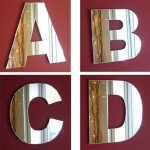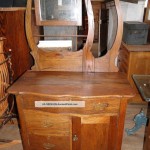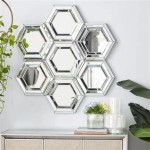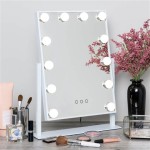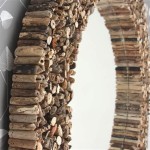Best Way to Hang Large Wall Mirrors
Hanging a large wall mirror can dramatically transform a room, adding light, depth, and a touch of elegance. However, the size and weight of these statement pieces present unique challenges. Proper installation is crucial to ensure both safety and the longevity of the mirror and the wall it adorns. This article provides a comprehensive guide to safely and effectively hanging large wall mirrors.
Assessing the Mirror and Wall
Before attempting to hang a large mirror, careful assessment of both the mirror and the wall is essential. Understanding the weight and dimensions of the mirror helps determine the appropriate hanging method. Equally important is understanding the wall's construction material, whether it's drywall, plaster, or concrete.
Essential Tools and Materials
Gathering the correct tools and materials beforehand streamlines the hanging process and ensures a secure installation. The necessary items typically include:
- Heavy-duty wall anchors (e.g., toggle bolts, D-rings)
- Screws appropriate for the wall type and anchor system
- Stud finder
- Measuring tape
- Level
- Pencil
- Drill with appropriate drill bits
- Safety glasses
- Mirror adhesive (optional, for added security)
Locating Wall Studs
Hanging heavy objects on drywall requires anchoring into wall studs whenever possible. Studs provide the most secure foundation. A stud finder helps locate these structural supports behind the wall surface. Mark the stud locations with a pencil for easy reference.
Choosing the Right Hanging Hardware
The appropriate hanging hardware depends on the mirror's weight and the wall's construction. For heavier mirrors, especially on drywall, heavy-duty anchors like toggle bolts or D-rings are recommended. These anchors distribute the weight more evenly, reducing stress on the wall. Consult the mirror manufacturer's recommendations for specific weight limits and hanging hardware suggestions.
Marking and Positioning the Hardware
Accurate measurements and markings are critical for a level and securely hung mirror. Measure the distance between the mirror's hanging hardware (D-rings, wire, etc.) and transfer these measurements to the wall, ensuring alignment with the previously marked stud locations. Use a level to verify the markings are perfectly horizontal.
Installing the Wall Anchors
Following the manufacturer's instructions, install the chosen wall anchors at the marked locations. Drill pilot holes as needed to prevent damage to the wall. Ensure the anchors are securely fastened and flush with the wall surface.
Hanging the Mirror
Carefully lift the mirror and align its hanging hardware with the installed wall anchors. For heavier mirrors, enlist the help of another person to prevent accidents and ensure proper alignment. Gently lower the mirror onto the anchors, ensuring it sits securely.
Using Mirror Adhesive (Optional)
For added stability and to prevent shifting, consider using mirror adhesive. Apply the adhesive to the back of the mirror in vertical strips before hanging it. This provides an extra layer of security, particularly in high-traffic areas or earthquake-prone regions. Follow the adhesive manufacturer's instructions for proper application and drying time.
Checking Stability and Alignment
Once the mirror is hung, double-check its stability. Gently push on different areas to confirm it's firmly attached. Use a level to ensure the mirror remains perfectly aligned. Make any necessary adjustments to the hanging hardware or adhesive if needed.
Safety Precautions
Throughout the entire process, prioritize safety. Wear safety glasses when drilling and handling heavy objects. If the mirror is exceptionally large or heavy, consider seeking professional assistance for installation. Professional installers possess the expertise and equipment to handle complex hanging situations safely and efficiently.
Alternative Hanging Methods for Specific Wall Types
While the above steps outline a general approach, different wall types may require specific adaptations. For concrete walls, use concrete screws and appropriate anchors. For plaster walls, ensure the anchors are compatible with the often brittle nature of this material. Research best practices for the specific wall type before proceeding.
Dealing with Irregularly Shaped Mirrors
Irregularly shaped mirrors present additional considerations. The hanging hardware may not be uniformly distributed, requiring careful planning and potentially custom solutions. Consider using French cleats or multiple hanging points to ensure even weight distribution and prevent tilting.
Concealing Wires and Hardware
For a more polished look, consider concealing any visible wires or hardware. Specialized clips or covers are available to manage wires discreetly. Alternatively, choose a mirror with integrated hanging hardware concealed behind the frame.

How To Hang A Large Or Heavy Mirror

How To Hang A Large Wall Mirror Step By Tutorial
How To Hang A 100 Pound Mirror On Drywall Quora

How To Hang A Large Wall Mirror Step By Tutorial

How To Hang A Heavy Mirror Or Picture True Value

How To Hang A Heavy Mirror Diy Family Handyman

A Better Way To Hang Heavy Mirror Hanging Picture Wire

How To Hang A Heavy Mirror The Home Depot

How To Hang A Heavy Mirror The Home Depot

Unlock The Secrets Of Hanging A Large Wall Mirror What You Need To Know

